How to Improve Your Golf Swing Plane
Think Golf Swing Plane is Over Your Head? Check Out This Ultra-Simple Guide to Understanding and Practicing Swing Plane.
Golf swing plane is a complicated concept that eludes a lot of golfers. You know it’s important, but you might not know why it’s important.
Buddies may have told you that your swing is too steep or too shallow… but you’re not 100% sure what that means.
Maybe an instructor has warned you against swinging off plane, but you have no idea what that is or how to avoid it.
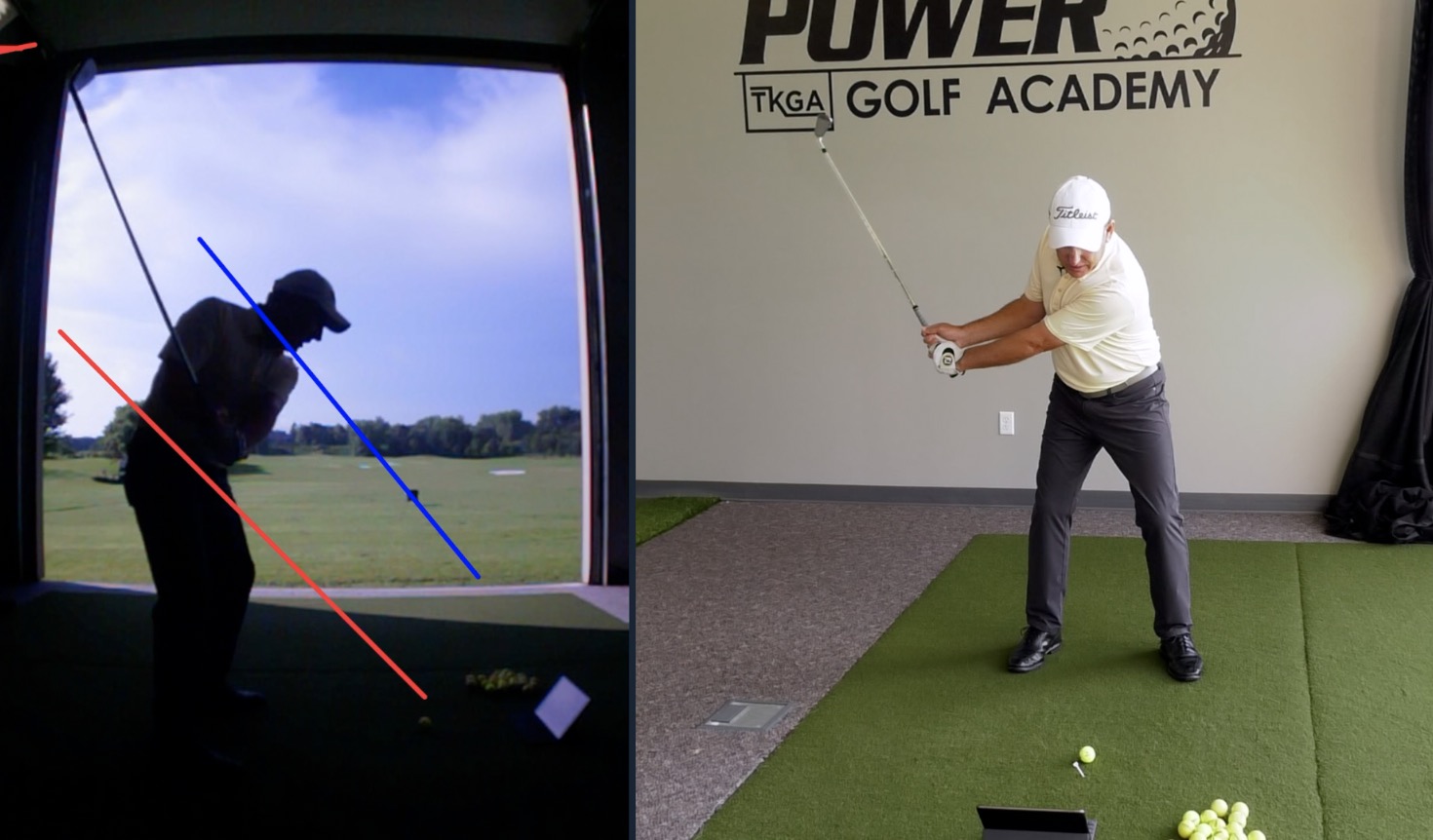
And maybe—if you’re like a lot of your peers—you’ve tried to find these answers but wound up more confused than before.
I’m here to help. I’ll explain what we actually mean when we talk about swing plane. You’ll also learn how to define and discuss which type of golf swing plane you use. Finally, I’ll share tips for keeping the club on plane from takeaway to finish.
Let’s jump in.
What is the Correct Swing Plane in Golf?
Golf swing plane has been a hot topic in golf since that iconic image of Ben Hogan with a glass plane resting on his shoulders emerged in the 1950s. Hogan introduced the concept in his book Five Lessons: The Modern Fundamentals of Golf.
Swing plane has been a major topic of discussion in the golf world ever since.
What exactly is golf swing plane? And what does our swing plane mean for the outcome of our golf shots?
What is Golf Swing Plane?
That image of Ben Hogan with the glass plane is probably the clearest, simplest way to understand swing plane.
Both your backswing and forward swing move on an angle. That angle is your swing plane.
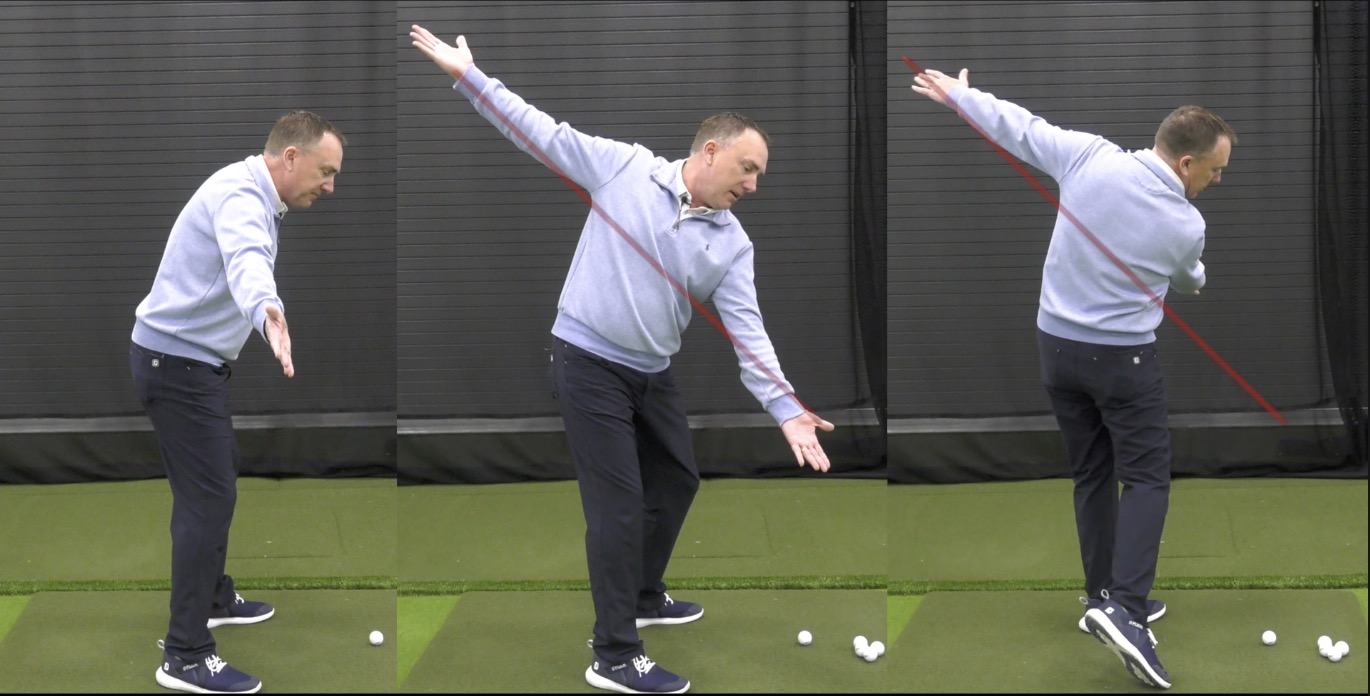
Now, it’s important to keep in mind that your plane angle isn’t only defined by the rotation of your golf club. Your body also determines your overall golf swing plane.
In fact, swing plane refers to:
- The angle at which your club shaft travels
- Your club head’s angle of motion
- The rotation of your shoulders
- Pivot angle of your hips
Keep this in mind as you read on. When you understand that golf swing plane concerns your body as much as your golf club, the drills I’m about to teach you will make more sense.
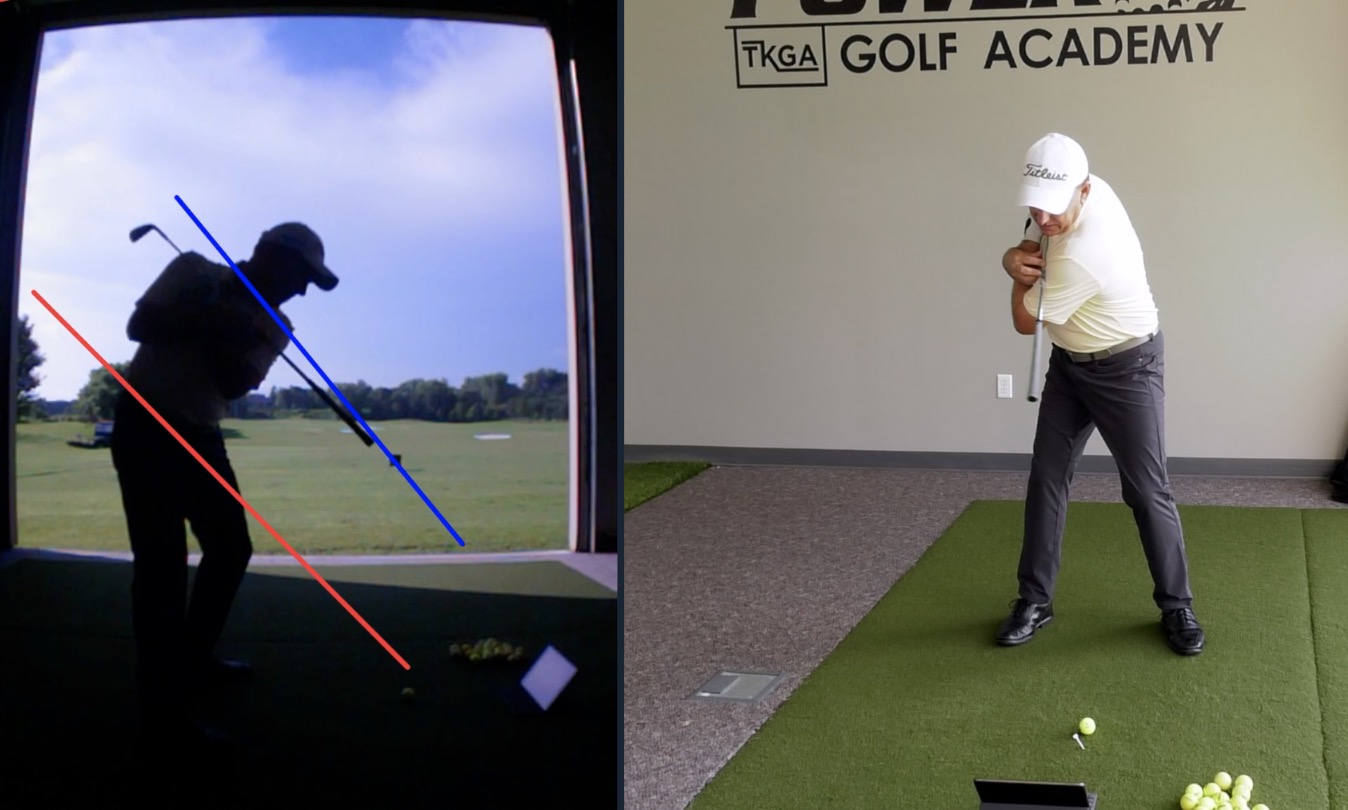
Steep Plane vs. Shallow Plane
Now that we’ve cleared up the meaning of “golf swing plane,” let’s talk about these key terms. What does it mean to have a steep plane? What about a shallow plane?
As I said before, your shoulders and hips rotate on a swing plane just as your golf club does. But for the sake of simplicity, I’m going to explain shallow versus steep by focusing only on the club shaft.
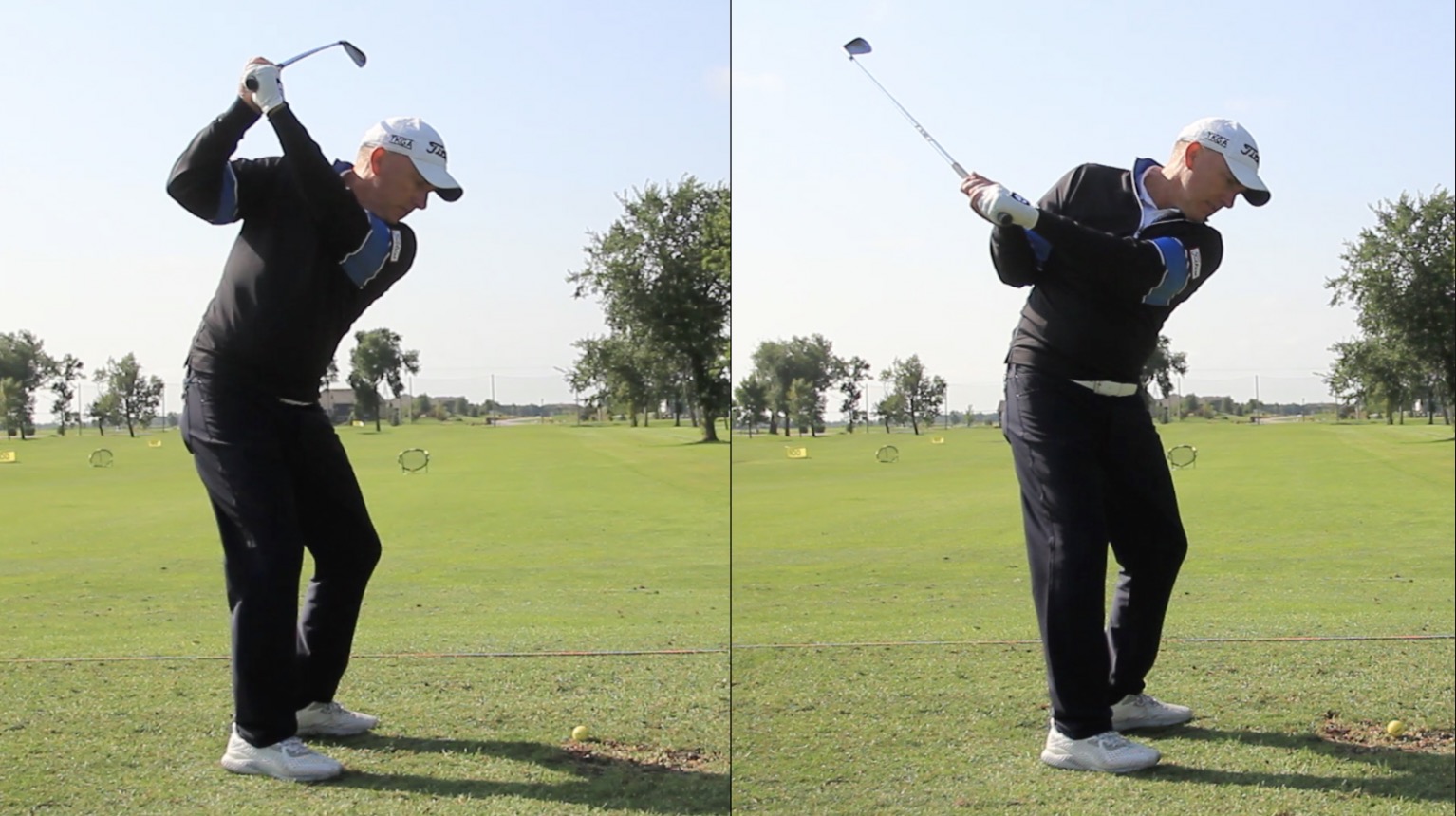
If you have a steep golf swing plane, your shaft travels at a more vertical angle. You draw it up high on the backswing and bring it down on a sharp descending motion as you swing through.
We refer to a flatter swing plane as a “shallow plane.” This is just what it sounds like. Instead of drawing the club shaft up and down, you maintain a much lower plane angle. You swing the club flat and around.
What is a Good Golf Swing Plane?
I mentioned earlier that the subject of swing plane is as confusing for other golfers as it is for you. That’s because there is no perfect science to this.
You’d think that with all we know about golf physics and plane angles, I’d be able to tell you how to swing the club perfectly. But I can’t. And I can’t because not all golfers are exactly alike.
You may do better with a steep swing plane while your buddy performs his best at a flatter angle. Perfecting your golf swing plane is less about locking into a universally perfect angle and more about knowing how and when to adjust.
More specifically, you need to know how to stay on plane so you can avoid the dreaded shank and other nightmares. You also need to learn how to control swing plane on your backswing and how to adapt for your driver shots.
First, let’s start by examining one very important question:
What does it mean to be “on plane?”
On Plane vs. Off Plane
My goal in this article is to teach you how to keep your golf swing on plane.
Here’s what that means.
What is the Difference Between “On Plane” and “Off Plane?”
If you keep your club shaft on plane, you’re working on one plane all the way up to the top of your backswing and all the way down through impact. Once again, this definition also applies to shoulder and hip rotation.
It may help to think back to that Ben Hogan image with the glass plane. When you stay on plane, your shoulders and club shaft are always in line with the imaginary glass.

This is also called a “single plane” golf swing. The name is pretty self-explanatory. You remain on the same plane for the entire swing motion. Single plane.
As you may have already guessed, an “off plane” swing describes a motion in which you veer away from an established plane. The plane angle of your backswing looks very different from the angle of your downswing. We also call this a “two plane” swing.
Now, most instructors and online videos will tell you to focus on staying on plane. I’m going to agree with that advice for the purposes of this article.
Some would argue that a two plane swing is actually better for generating speed. I will admit it: that advice does have merit. We’re seeing a lot of great golfers who use a steeper plane in the backswing and go flatter on the downswing.
However, it takes a certain level of skill to go off plane and maintain control of your motion. A two plane swing can complicate your angle of attack, face orientation, and several other important factors.
For now, focus on creating a balanced, single plane swing. You can advance your game from there.
What to Look for When You Check Your Swing Plane
It’s not easy to simply feel whether you’re on plane. Fortunately, there are some tricks for that will help you visualize your plane line.
One of my favorite tools for checking swing plane is the LiveView camera. This camera displays live, mirror-image video of your swing right on your tablet or smart phone. The LiveView app allows you to draw plane lines on the screen so you can see how your swing lines up.
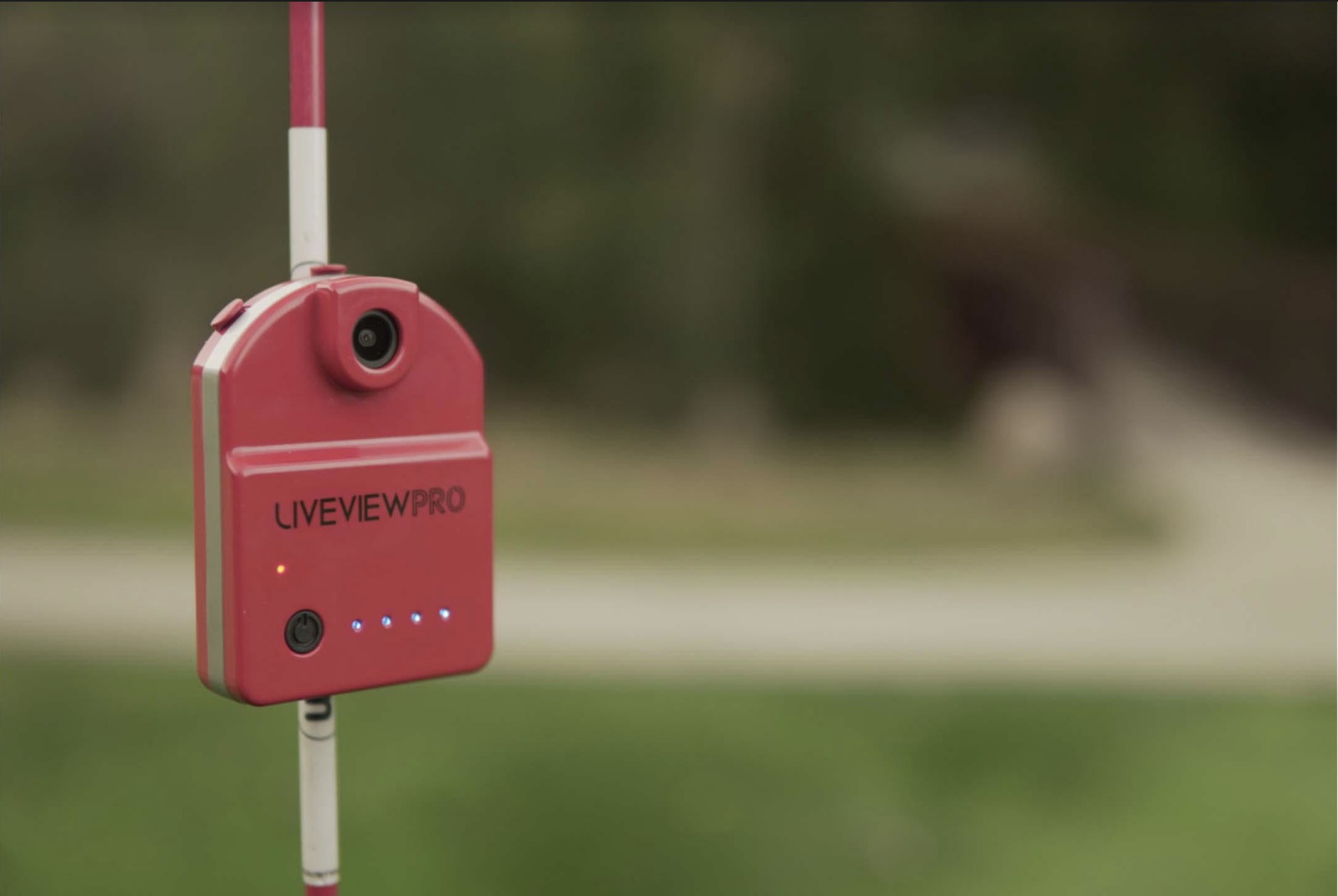
If you happen to use LiveView, I recommend drawing one plane line to track club shaft and one plane line for your shoulders.
For your club shaft, watch that your hands and club head remain on the plane line through the takeaway. This gets you set up on the right path.
For your shoulders, watch that the lead shoulder rotates down to follow the incline of your plane line. When I use LiveView with my students, I see a lot of them bringing that lead shoulder up and out instead of down.
Now, what if you don’t have a LiveView camera?
No problem. I have a couple great tips for checking hip rotation and shoulder rotation. Both of these will help you find the right club path angle as well.
To check the swing plane of your hips, hold the club across your hips with the shaft parallel to the ground. Rotate your hips back and through as you would during your regular golf swing.
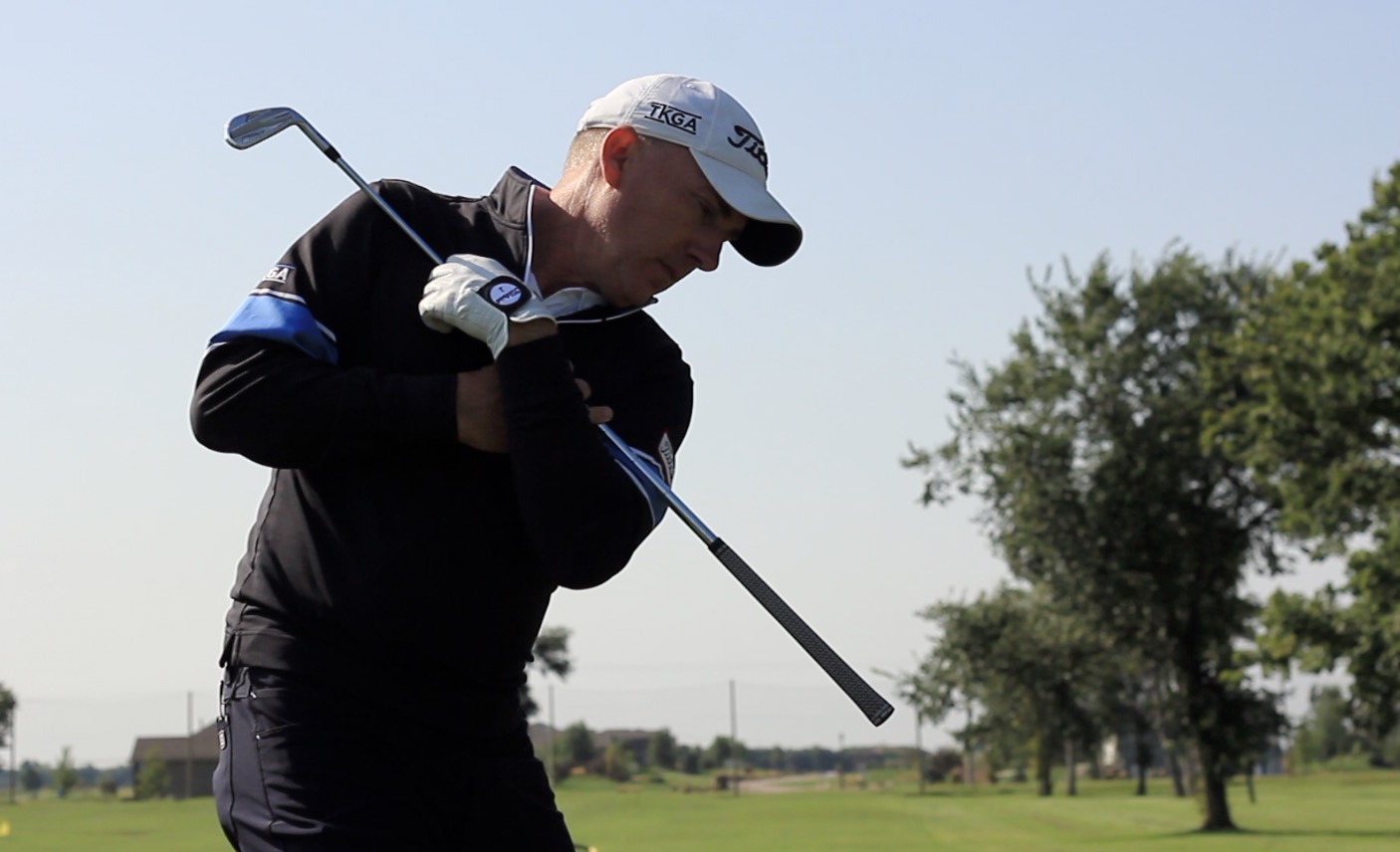
Watch how the club head moves with your hip rotation. If it looks balanced, you’re on plane.
To test your shoulders, hold the club against your chest, shaft parallel to the ground. Once again, rotate as if you were taking a swing. Watch how the club head tracks the motion of your rotation. Is it even?
If it’s not—or if you’re still not sure—I have a great drill that can help.
A Great Golf Swing Plane Drill for Balance
So far, we’ve taken a pretty cerebral look at golf swing plane. Without digging too deep into the physics of golf, we’ve talked angles, plane lines, and degrees of rotation.
Even if you completely followed everything I said, you may be still be unsure how you’ll apply this to an actual round. As all golfers know a little too well, there is a world of difference between what we understand and what we can actually feel in our swing.
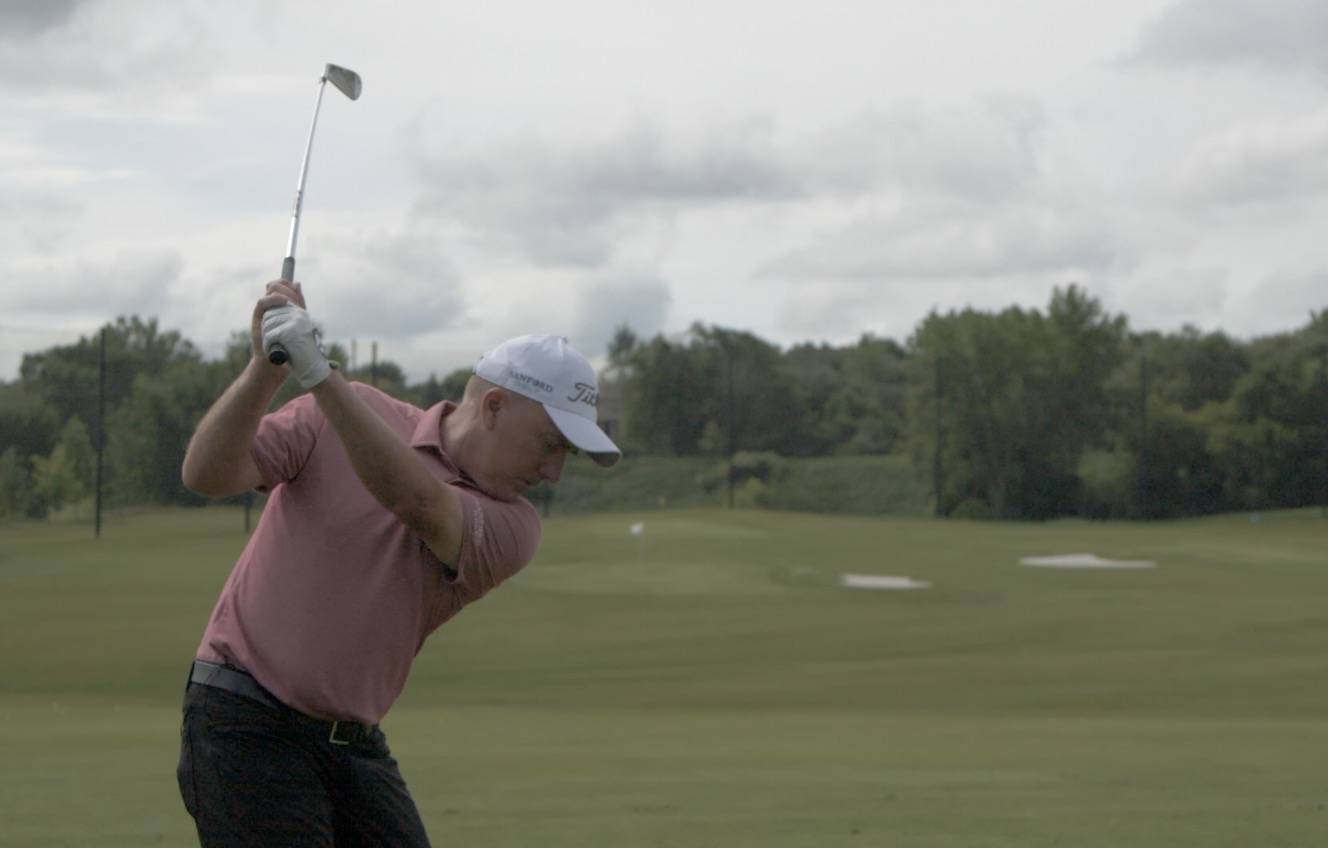
Your swing motion happens fast. It’s over in an instant. You definitely do not have enough time to evaluate or even notice plane angles.
Don’t worry. I have a drill that can help you establish a balanced swing without having to think about it. After all, balance is what we’re after here. We’re working on getting that nice, even, single plane swing.
Here’s the simplest thing you can do to make sure your swing motion is on plane.
Continuation Drill
The steps are simple.
- Get set up without a golf ball.
- Take three continuous swings, one right after the other.
- Grab a golf ball and set up your shot.
- Hit a golf shot.
It’s suspiciously simple, I know. But when you try this drill, you find that the continuous motion allows the club to find its way.

The club wants to find the right golf swing plane. It wants to be balanced. Just like a pendulum finds its symmetrical motion, your golf club uses continuous motion as a guide, easing it into its natural place.
What I love about this drill is that it takes you out of your head. You don’t have to get bogged down in plane lines or worry about the takeaway. You just move naturally and find your angles naturally.
Now, I’m going to cover one of the most common swing plane struggles: backswing mistakes.
Essential Golf Swing Plane Training Tips
The continuation drill is a great tool for getting control of your golf swing plane in a general sense. But if you’re ready for a deeper dive, I have some exercises that will help you overcome the more challenging swing plane issues.
First, let’s take a look at your backswing rotation.
Backswing Plane
There is no way to achieve your best golf swing if you don’t have backswing rotation mastered.
It’s a problem I see all the time. Instead of rotating their body on the backswing, golfers just pick the club up and make their arms do all the work.
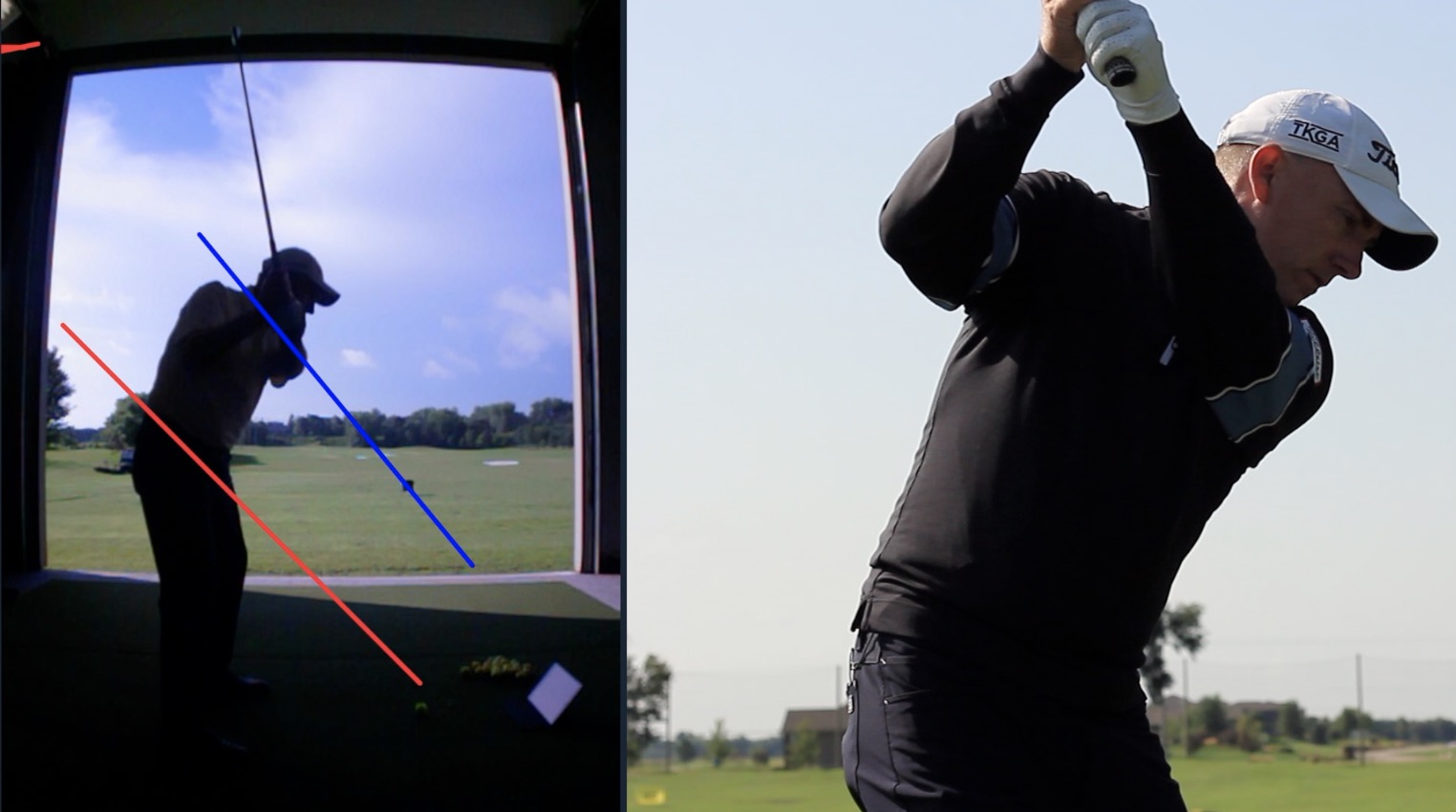
The result is lopsided golf swing planes between the shaft and shoulders. The shaft travels up on and down on a steep swing plane, while the shoulders stay shallow.
This is a terrible combination that will kill your shot. Fortunately, it’s easy to train your body to rotate naturally. Just try this drill:
- Take your regular golf setup.
- As you swing back, step your trail foot backwards. It should land a little behind your body, perpendicular to your lead foot with both heels more or less aligned with one another.
- Repeat this motion three times.
- Take a your golf shot with a golf ball, trying to recreate the feeling of backswing rotation without moving your foot.
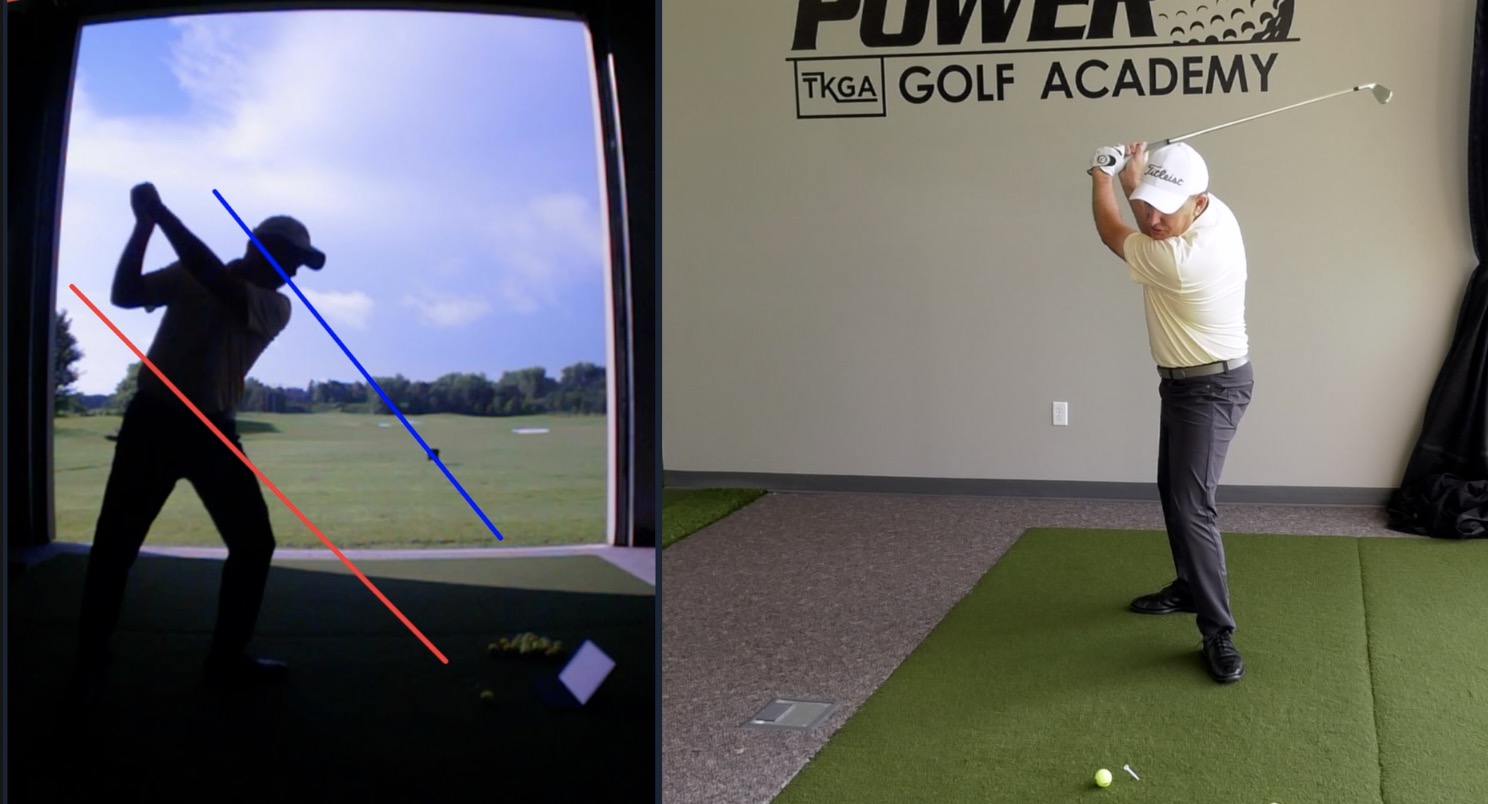
When you take that step back with your trail foot, the club naturally works at a better angle. Your hips and shoulders rotate better. And—once again—you accomplish these things without having to think about them. They just happen.
Golf Swing Plane and Your Driver
A lot of golfers have a hard time mastering golf swing plane with their driver. When you tee up, you have two major goals. You want to hit up on the ball, and you want to put as much speed on the ball as you can.
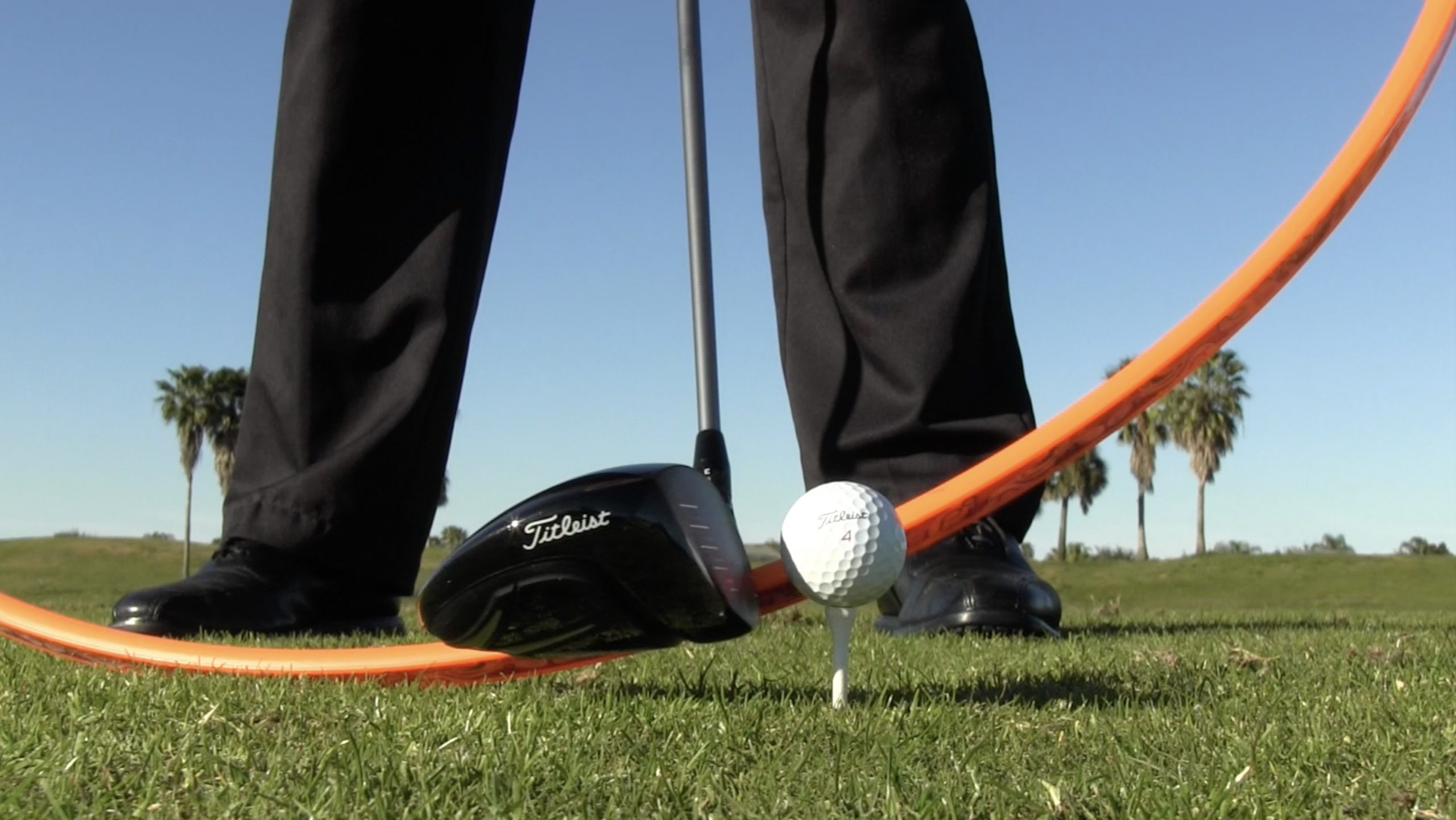
These goals seem simple, but they make hitting your driver different from hitting any other club in your bag.
Without a doubt, the driver is one of the most enjoyable clubs to hit. But it’s also unique, which means you have to make a few adjustments in order to get your best golf swing with your driver.
A lot of amateur golfers get tripped up in their driver swing plane because they get too steep in the transition. This steep angle forces them to swing down on the ball instead of up. If they’re right-handed, they’re also likely to swing to the left.
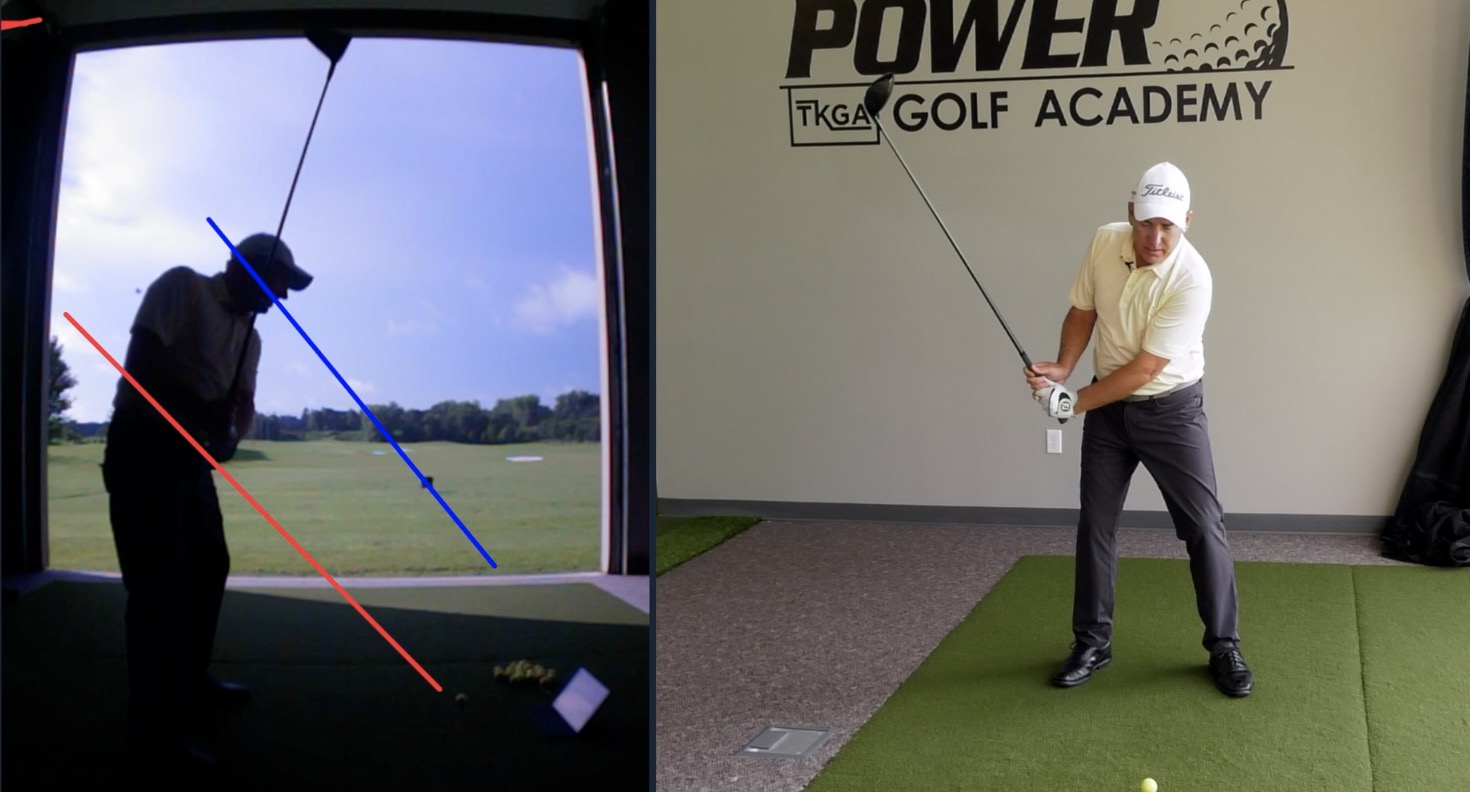
These two errors can have disastrous results.
Here’s the good news (and I think you know where I’m going with this):
There is a really easy drill you can use to fix these habits.
- Take your driver setup.
- Make your backswing.
- As you swing forward and make contact, step your trail foot forward and to the right (if you are right-handed). This should be a big enough step that your trail foot is now closer to the target than your lead foot.
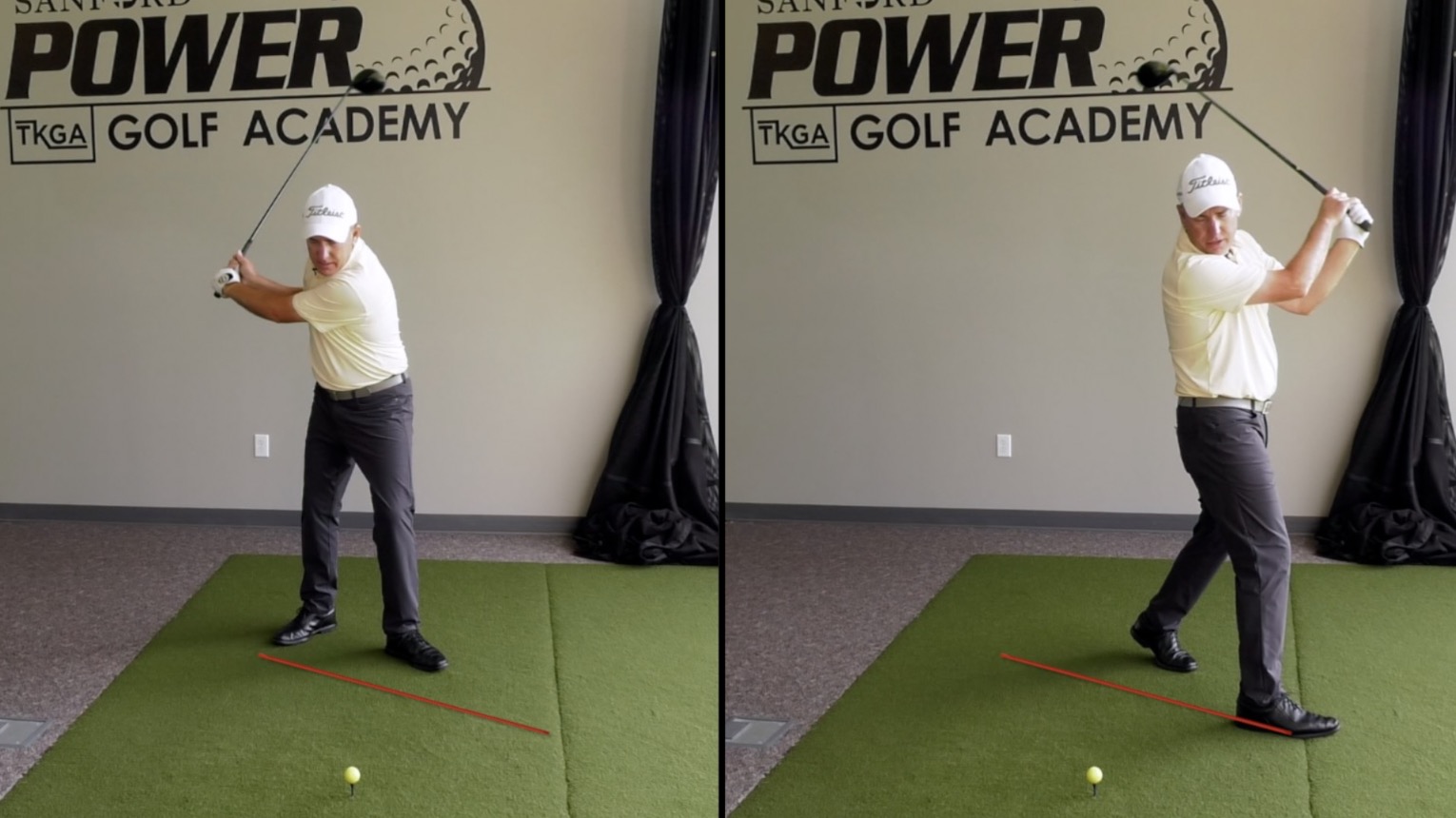
This step forward naturally drops the club more from the inside, creating a flatter swing plane. This allows you to hit up on the ball with a rightward aim . . . the formula for a nice, high draw.
The Big Picture
If you’re overwhelmed by all the information I just provided, don’t worry. You don’t have to start applying all this information right away. My only goal is to create a little clarity surrounding golf swing plane and give you a handful of practice tools.
All you need to know to get started is this:
- Every golf swing has a swing plane. It may be steep, shallow, or something in between. But your swing motion inevitably has an angle.
- Some golfers believe it’s better to maintain that angle throughout the swing (i.e. stay on plane). Others believe in going off plane to generate speed. It all depends on the golfer. But if you’re struggling, it’s better to learn how to maintain a single plane swing first.
- Try the continuation drill to find swing plane and balance naturally.
As you work towards finding your own natural golf swing plane, you can return to this article to build your skills. Try perfecting your backswing. Adjust your driver swing plane for better shots off the tee.
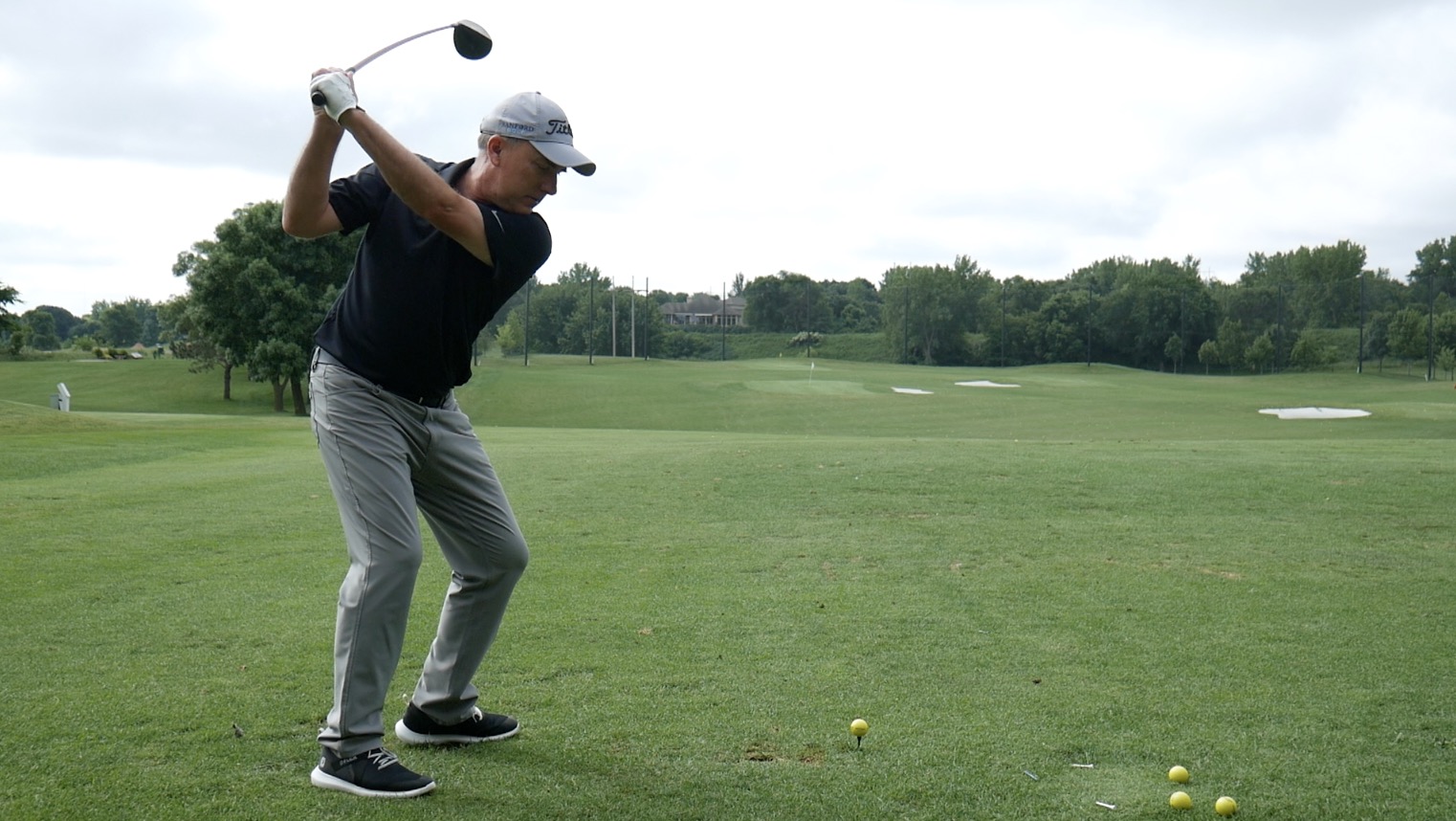
I also recommend getting your hands on a LiveView camera, if possible. This is without a doubt one of the most effective training devices I use with my students.
The short explanation: LiveView is a small camera that can attach to an alignment rod to record your swing from any angle. It syncs with an app on your smartphone or tablet, allowing you to watch a mirror image of your swing in real time.
I love it because it helps my students recognize their own mistakes as they make them. This helps them learn faster, and it gives them a visual to match what they feel in their bodies.
But LiveView is especially helpful for practicing golf swing plane, because it allows you to draw lines on the screen. It’s also a Golf Digest Editor’s Choice.
Whatever methods you use to practice your swing plane, drop us a line in the comments and let us know how it went. I’d love to hear what tips worked for you, what didn’t, or what questions you still have.
For more in-depth golf tips, visit us at GreatGolfTipsNow.com. This golf instruction is completely free and packed with detailed advice to help you play better golf!


I’d value hearing from you about techniques to ensure you are aligned properly on the tee to help get the ball in the fairway on long holes or on the green on Par 3’s. Thank you
You dont show the origin of the blue line. A point through the shoulders/neck cant be drawn at any angle
Larry, great point. The origin of the line is discussed in the video, but the article does not state it, so thank you for bringing that to our attention!
The blue line basically runs parallel to the line that runs through the shaft, and is used for reference for shoulder rotation. Hopefully that clears things up a bit for you. Thanks for reading and taking the time to comment!
Tim,
Great idea, thank you! I will be sure to pass this forward to our content team…appreciate the post!
I have often wondered, when hitting the golf ball no matter what club your are using do you look at any specific part of the ball like the front, the top or middle of the ball or the back of the ball??
Good question, we suggest looking at not one exact spot but more a general location preferable the back of the ball. Hope that helps.
Ever heard of Moe Norman? Probably the best ball striker to have ever played the game. Your definition of one-plane vs. two-plane swing is different from the classic definitions of the two types of swing. Moe was a classic one-plane golfer. No one has ever used his technique except the now notorious Bryson DeChambeau. When you hold your arms almost vertical at the beginning of the swing and the club is at an angle from your arms, you are in a two-plane swing. I try to be a one-plane golfer, and some of the info you give us doesn’t work for a true one plane swinger. However, most of your suggestions do apply to both methods.
Hi, I’m trying to find the plane slider training aid that you use in your videos. I’m unable to find it this far. Would you be able to tell where I might be able to buy it from please? I’m in the uk so I hope I can get one. It looks as though it’s something I’m needing to help with the virtual line swing I’m developing. Many thanks.
Daniel,
We no longer sell the plane slider. However we are working on a new training aid that is better and will allow for more use. Stay tuned…